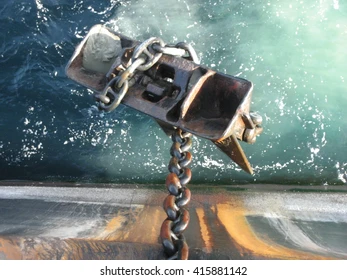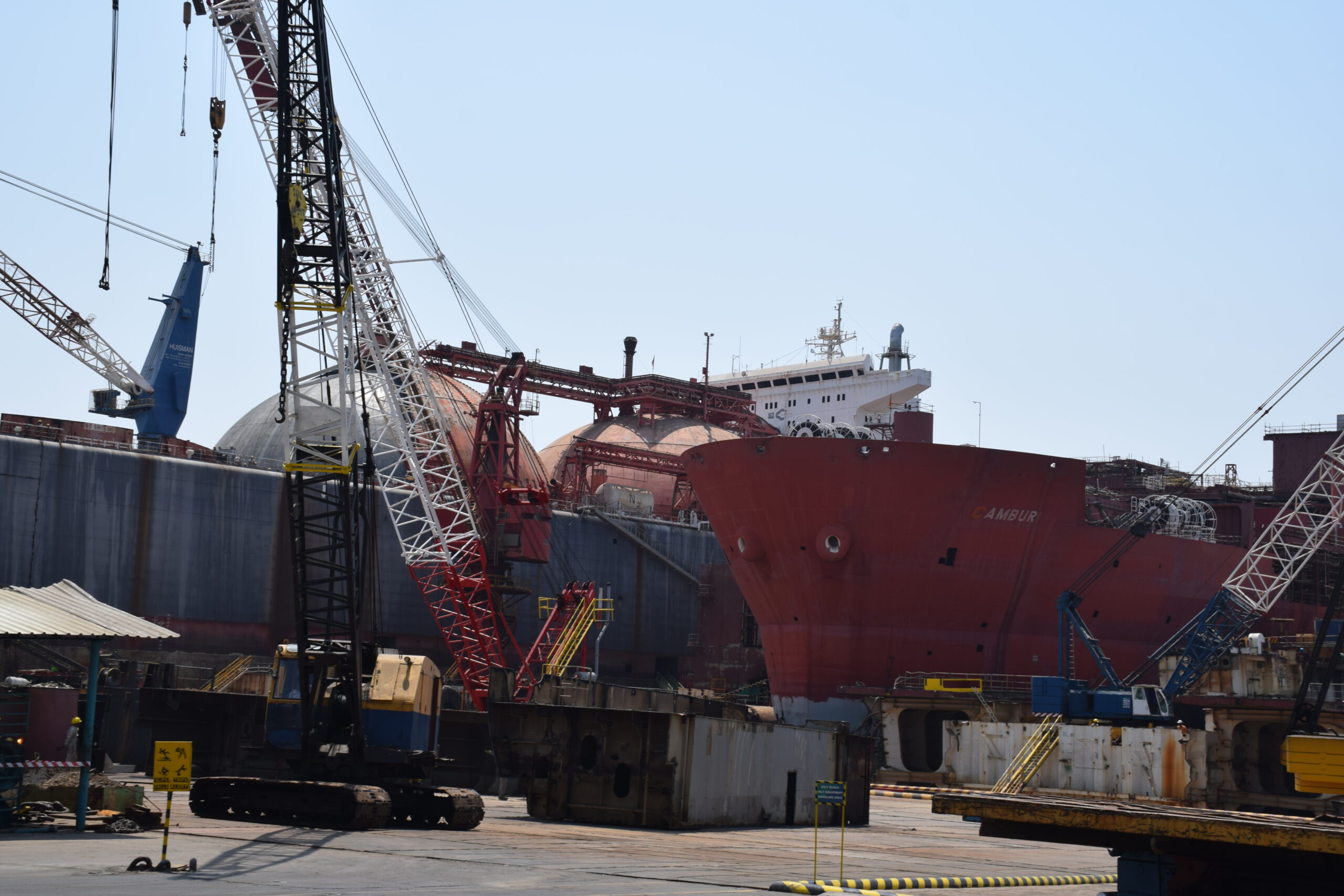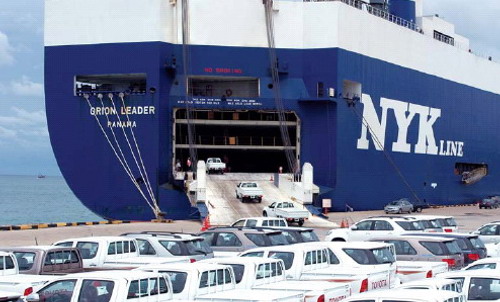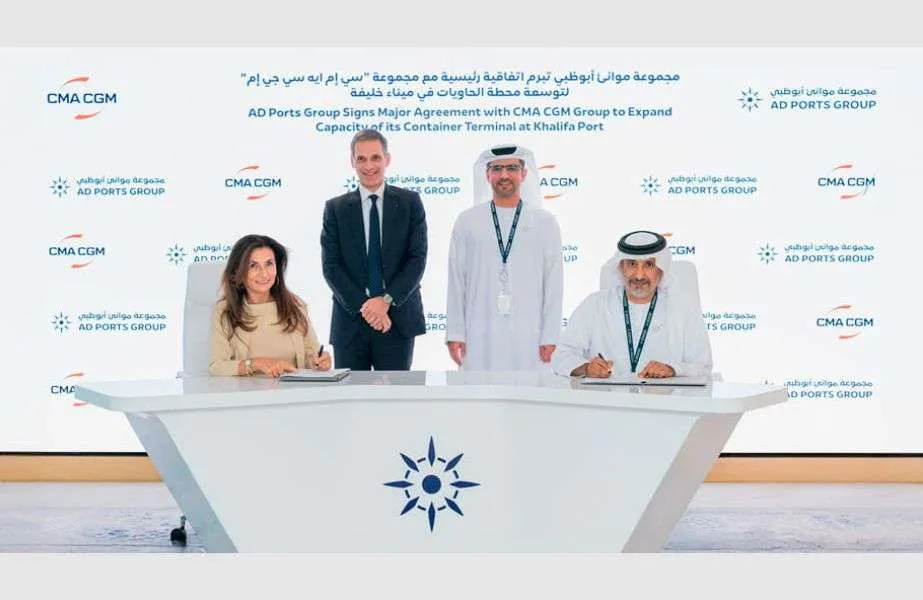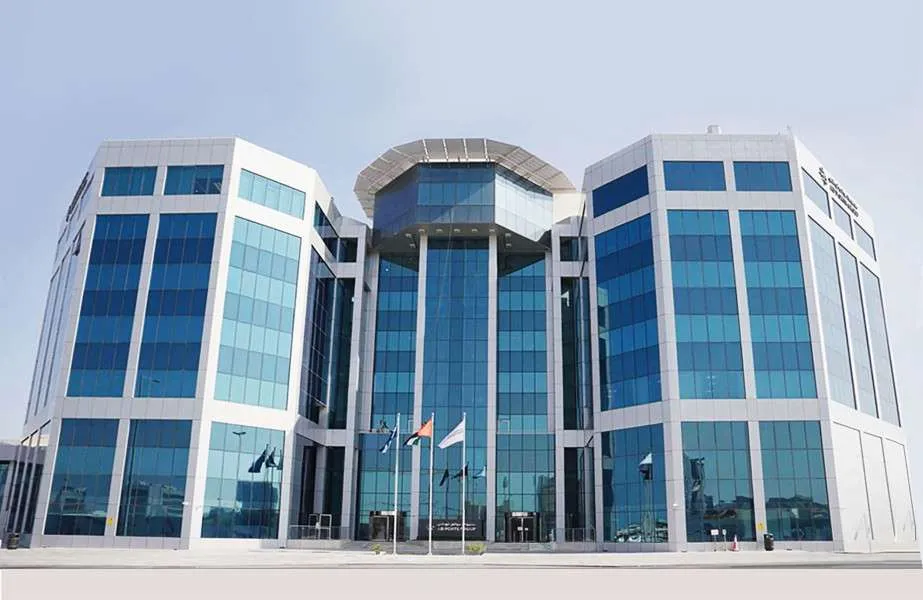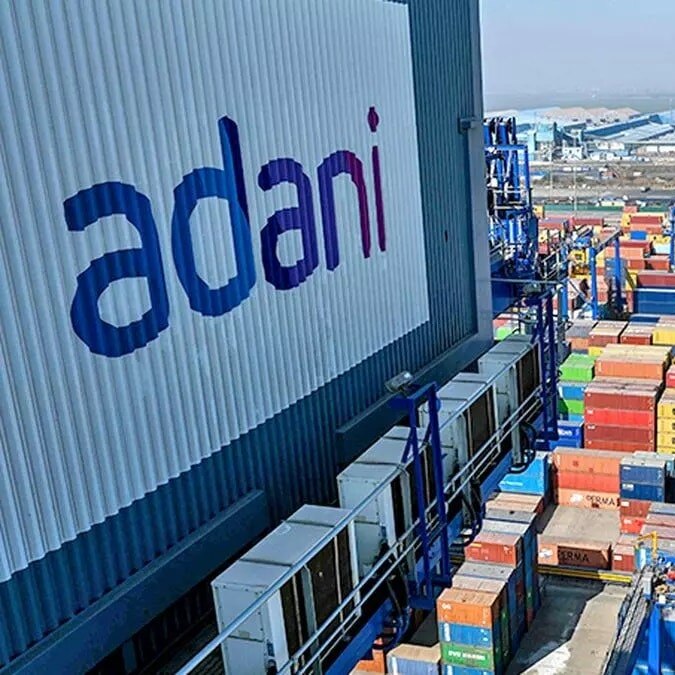Repeated Anchor Failures Raise Safety Concerns at Bhavnagar Port
Experts call for an urgent re-survey of the anchorage point in the dangerous Gulf of Khambhat waters
The Gulf of Khambhat, located along India’s western coast, is globally known for its exceptionally strong tidal currents. Ships navigating from Diu to Bhavnagar, Hazira, and Dahej often face the full force of these unpredictable waters. The situation has recently drawn serious attention after a series of alarming incidents involving anchor breakages at Bhavnagar Port, raising questions about maritime safety and the accountability of government authorities overseeing the region.

The most recent incident involved the bulk carrier Frazis Star, which had arrived at Bhavnagar Port on August 22, loaded with 49,200 metric tons of limestone. The vessel’s experience highlights a pattern of negligence and poor operational planning that has come to characterise the port’s recent history.
On August 23, while the ship lay anchored in the strong tidal currents, disaster struck. Before the captain could take any corrective action, one of the vessel’s anchors, along with its chain, snapped and sank to the seabed. The accident occurred despite the ship’s heavy cargo and ongoing monsoon-season currents that make the Gulf of Khambhat particularly treacherous. With only one anchor remaining, the crew managed to stabilise the vessel and continue partial unloading operations, but the situation remained precarious.
Then, on September 4, while unloading 5,400 metric tons of cargo, Frazis Star lost its second and final anchor chain. With both anchors lost, the massive cargo-laden vessel became uncontrollable in the swift current before the crew could regain command. The ship was eventually moved out of the anchorage area and fitted with two new anchor chains after a lengthy delay. Following surveys and safety inspections, the vessel was once again cleared to return to Bhavnagar anchorage for further cargo unloading.
However, even after the installation of new equipment, tragedy repeated itself. On Sunday afternoon, as the ship was continuing its operations with about 30,000 metric tons of limestone still onboard, one of the newly fitted anchors broke once again. The vessel began to sway dangerously, raising fears of collision or grounding.
This was not an isolated event. Earlier, in the first week of September, the anchor of another vessel, Shan, which had arrived at the Alang Ship Recycling Yard for demolition, also broke under similar circumstances. The frequency of such incidents at Bhavnagar Port has alarmed maritime professionals, many of whom attribute these failures to poor planning, negligence, and lack of accountability among government officials.
An experienced shipping executive, speaking on condition of anonymity, explained the technical risks involved. “The water channel near the Bhavnagar anchorage is extremely risky,” he said. “A hundred-meter-wide stream of fast-flowing water from the Narmada River passes through this area. There are sandbanks on both sides, but they are less of a problem than the pressure of the current itself. Despite repeated warnings, ships are still being instructed to drop anchors directly in this hazardous channel. As a result, anchors are breaking one after another.”
The executive added that the Gujarat Maritime Board (GMB), which governs Bhavnagar Port, urgently needs to re-survey the anchorage area and identify a safer location for ships to anchor. “Unless corrective steps are taken immediately,” he warned, “the risk of a major accident or environmental disaster cannot be ruled out.”
Ship Moksha Gets Stuck While Raising Anchor
Another vessel, Moksha, faced a separate but related ordeal on Sunday. The ship, which arrived at Bhavnagar Port on September 21 carrying 51,933 metric tons of limestone, completed its cargo discharge on October 4. However, when the crew attempted to raise the anchor the following day to depart for Fujairah, the anchor became entangled with another anchor chain lying on the seabed—believed to belong to one of the previously stranded ships. After considerable effort and assistance, the Moksha was eventually freed and able to resume its voyage.
The incident highlights a growing concern that the seabed around Bhavnagar anchorage is becoming cluttered with broken anchor chains and equipment, increasing navigational hazards for all vessels entering or leaving the area.
Gulf of Khambhat: A Challenge for Even the Best Captains
The Gulf of Khambhat has long been known as one of the most difficult waterways to navigate due to its extreme tidal variations and rapid current reversals. Mariners say it requires specialised local experience and constant vigilance to manage large cargo ships safely in these waters.
Despite this, the Gujarat Maritime Board has assigned port officers who reportedly lack the necessary maritime command experience for such challenging conditions. Currently, Engineer Amit Kumar serves as Port Officer for Dahej, Hazira, and Magdalla, while Engineer Rahul Mishra oversees Bhavnagar and Alang ports. According to industry insiders, both officers, though technically competent engineers, are not seasoned mariners and have struggled to manage the region’s maritime challenges effectively.
Experts have urged the GMB to appoint experienced captains as port officers to handle operations in Bhavnagar and Alang. They have specifically recommended names like Captain Bansiva Ladwa, Captain Arvind Mishra, Captain Ashwin Solanki, and Captain Rakesh Mishra—professionals known for their extensive experience in navigation within the Gulf of Khambhat’s difficult environment.
“Managing port operations in this region isn’t just about technical engineering,” said one maritime safety consultant. “It’s about real-time judgment at sea. Only a master mariner understands the dynamic behaviour of ships in strong currents. It’s time the GMB recognised that and brought expertise back into the system.”
Questions on the Role of VTMS: Are They Watching Closely Enough?
The Vessel Traffic Management System (VTMS), designed to oversee maritime movement in the Gulf of Khambhat, also finds itself under scrutiny. The system operates radar surveillance and provides navigational guidance to ships, ensuring safety in congested or high-risk zones.
However, with repeated anchor breakages and vessel control issues at Bhavnagar anchorage, observers are now questioning the effectiveness of VTMS oversight. “If the anchors are breaking at the same point again and again, why hasn’t VTMS flagged the issue?” asked a former port officer. “Either there’s a lack of real-time monitoring or a communication breakdown between VTMS and port authorities. In both cases, accountability must be fixed.”
Maritime experts emphasise that VTMS should not only monitor ship movements but also analyse patterns of recurring incidents to identify unsafe anchorage zones. They argue that ignoring such warning signs could lead to a major maritime disaster in the future.
The recurring anchor failures at Bhavnagar Port are more than just isolated technical issues—they reflect deeper systemic lapses. The absence of timely surveys, ineffective coordination between VTMS and port officers, and the lack of experienced maritime professionals in key roles have collectively contributed to the growing crisis.
As ships continue to lose anchors and risk their safety in one of the world’s most challenging maritime zones, the Gujarat Maritime Board faces mounting pressure to act decisively. Unless it reassesses the safety of the Bhavnagar anchorage and strengthens its operational leadership with seasoned maritime experts, the next accident may not end with just a broken anchor—but with a full-blown maritime emergency in the turbulent waters of the Gulf of Khambhat.
Author: shipping inbox
shipping and maritime related web portal




